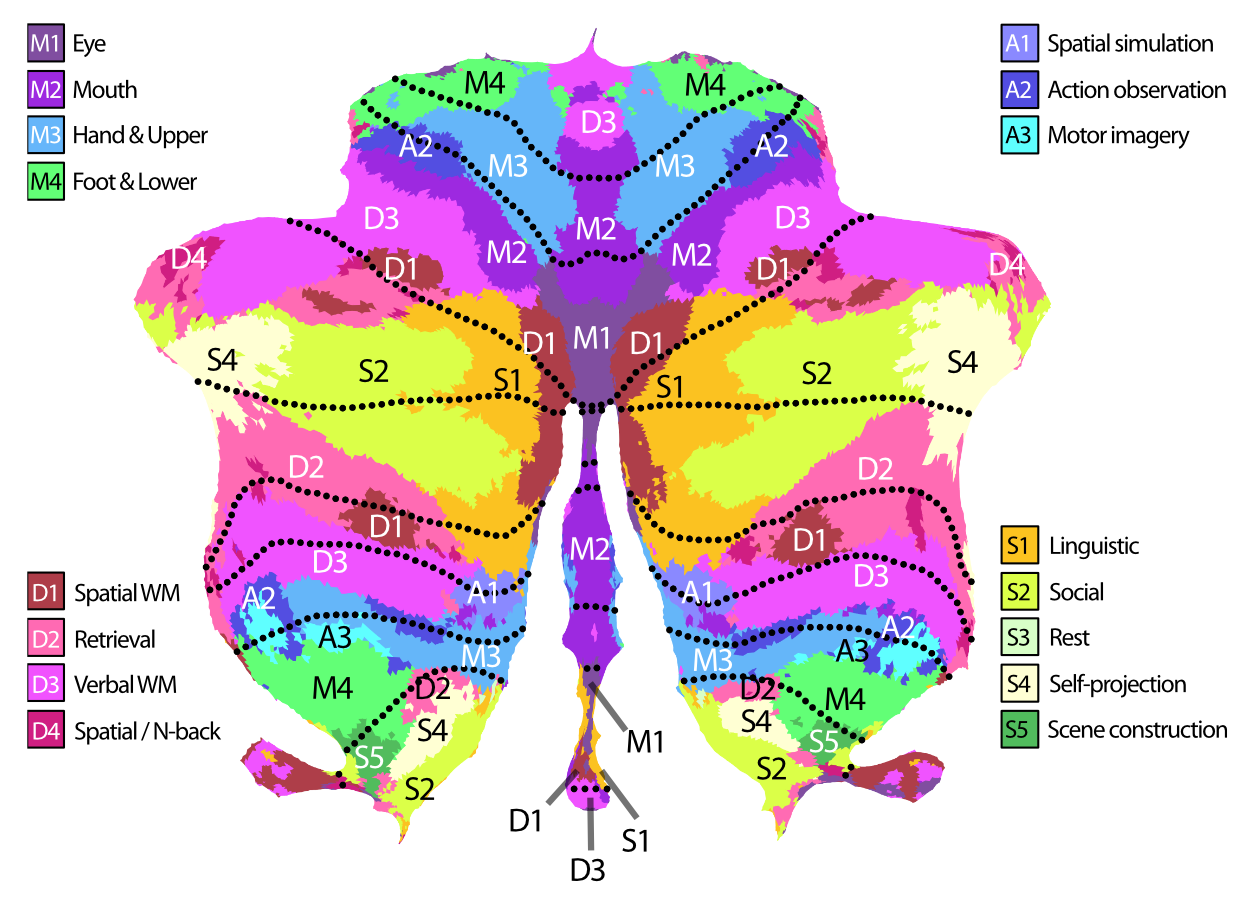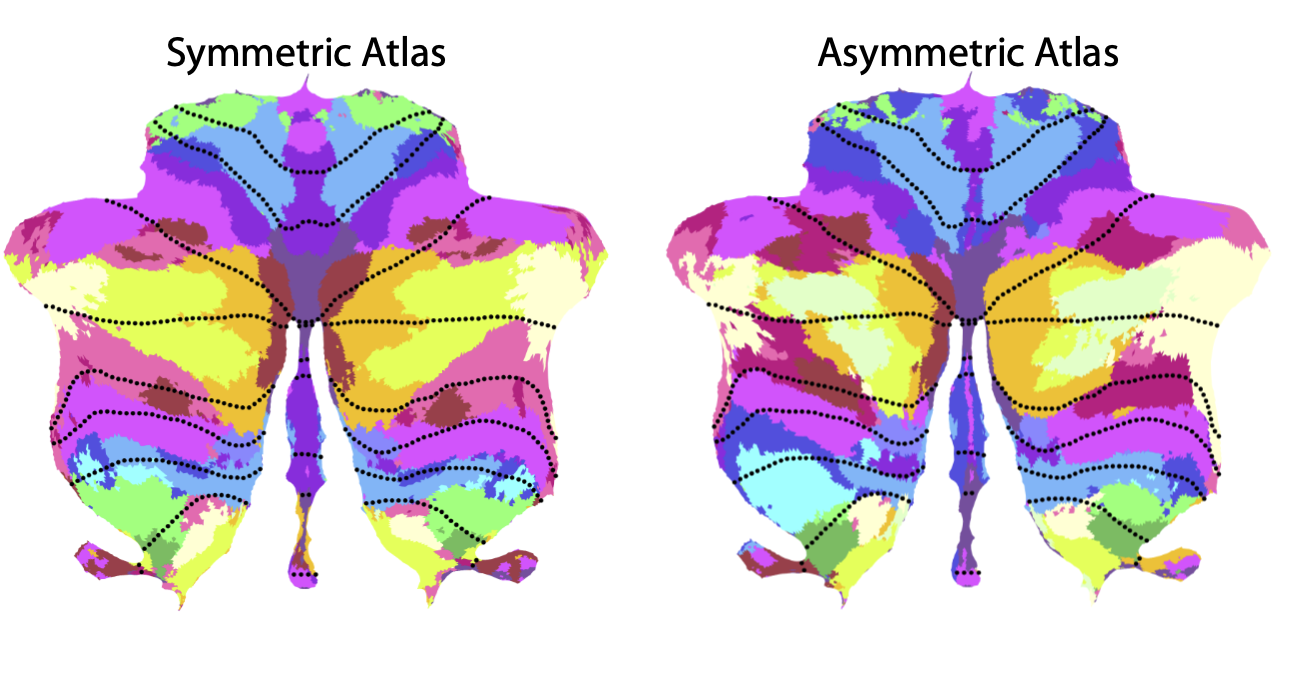
This post introduces a new functional atlas of the cerebellum that offers tools for precision mapping, lateralization studies and imaging applications. You can find more information about the atlas in our preprint. To start exploring the atlas, check out the cerebellar atlas viewer and the cerebellar atlas collection. You can find all links at the bottom of this page.
Contents:
- A new comprehensive map of functional regions
- Accessing the Atlas
- Using the atlas for Individual Precision Mapping
- Citing the Atlas
- Links
The human cerebellum is activated by a wide variety of cognitive and motor tasks. Previous functional atlases have relied on single task-based or resting-state fMRI datasets. We developed a functional atlas that integrates information from 7 large-scale datasets, outperforming single dataset parcellations. This post describes this new atlas and explains its utility for clinial and imaging studies.
A new comprehensive map of functional regions
The cerebellum is a versatile structure, activated by a wide range of tasks, from complex cognitive processes to basic motor skills. In the past, researchers have relied on atlases based on anatomical boundaries or single functional datasets. While informative, these atlases don’t reflect functional boundaries very well (in the case of anatomical boundaries) or have dataset-specific limitations.
That’s why we developed a way to combine the advantages of several large fMRI datasets using a Bayesian Hierarchical model. We used this framework to integrate information from 7 large-scale datasets in a collaborative effort, resulting in a parcellation that outperforms single-dataset parcellations.

Let’s delve into the other features of this new atlas:
1. Hierarchical Organization

This Cerebellar Atlas offers a nested hierarchy of functionalr regions across three levels of granularity. This means researchers can choose the level that suits their study, providing a more detailed or broader perspective as needed.
2. Symmetry

The cerebellum plays a key role in lateralized functions such as language. Understanding how function differs between the left and right hemispheres of the cerebellum is therefore crucial. The Cerebellar Atlas provides a version with symmetric boundaries, enabling the study of functional lateralization.
3. Precision at the Individual Level

No two brains are alike, and cerebellar functional organization is especially variable. The Cerebellar Atlas acknowledges this variability. It enables precision mapping in individuals, allowing researchers to tailor their analyses to a specific person’s cerebellar regions. With just a short 10-minute localizer scan, you can derive individual functional regions equivalent to 30 minutes of scan data.
Accessing the Atlas
Ready to explore functional regions in the cerebellum? You can access the Cerebellar Atlas in both volume and surface representations in the Atlas Viewer and download it as part of the Cerebellar Atlas Collection.
Using the atlas for Individual Precision Mapping
If you’re a researcher interested in using the atlas for individual precision mapping, check out our detailed guide in our preprint. We will soon release the code for integrating the group map with your data to create cerebellar region maps for the individuals in your study.
Citing the Atlas
The Cerebellar Atlas is distributed under the Creative Commons Attribution-NonCommercial 3.0 Unported License. You’re welcome to use it for non-commercial purposes, as long as you provide proper attribution in the form of acknowledgments and links (for online use) or citations (in publications).
For more information, have a look at our preprint and reach out.
Links
Atlas Paper: Preprint
Fusion Model Paper: Preprint
Cerebellar Atlas Resources: Atlas Viewer Atlas Collection
Code: ProbabilisticParcellation HierarchBayesParcel
Contact: Email